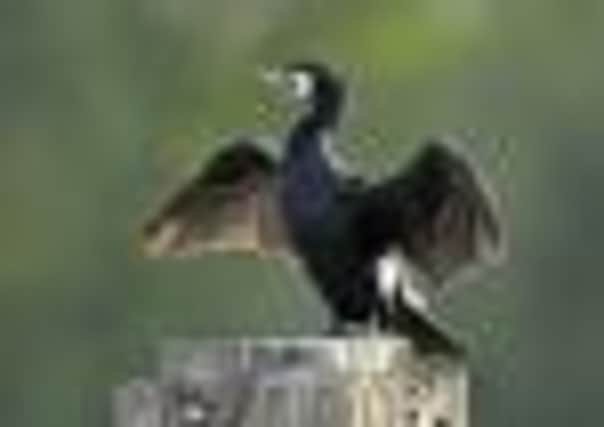Outdoors: Stranger in paradise


THEY say beauty lies in the eye of the beholder, but at first glance even the most gracious would find it a challenge to concede any attractive physical qualities in the cormorant, especially when seen silhouetted with wings outstretched like a crucifix against an evening sky where its dark almost pterodactyl-like form borders on the sinister.
I too suffer from such judgmental hypocrisy that is probably based more upon the cormorant’s reptilian profile than any other factor, and which is further compounded by my passion for angling. I positively enjoy encountering attractive-looking goosanders on my local river or loch and couldn’t care less if they devour large quantities of trout and salmon parr, for it is all part of the natural order. But if I see a fish-eating cormorant on a freshwater loch then my views are decidedly mixed. I tell myself that this is because they are essentially marine birds and should really be on the coast rather than preying upon trout, but I suspect there is also some deep-rooted prejudice based upon its prehistoric appearance.
Advertisement
Hide AdCertainly, the overwhelming blackness of the plumage of the cormorant has resulted in the bird traditionally being associated with evil and greed. The name “cormorant” dates back to the 14th century and owes its origin to the Latin for “sea raven” – another bird that has long been treated with suspicion. In the epic poem Paradise Lost, John Milton portrays Satan himself breaking into Paradise and sitting on the Tree of Life “like a cormorant”, and Shakespeare’s play Richard II refers to the gluttony associated with the bird.
Even today, the cormorant is universally detested by inland fisheries managers and is one of the few birds it is possible to obtain a licence to shoot for control purposes if they are deemed to be causing serious damage. Cormorants may have few admirers, but delve more closely into their behaviour and ecology, and what emerges is a fascinating bird.
Indeed, it is a widely held misconception that the cormorant is a uniquely marine bird and has no place on our freshwater lochs. While most cormorants breed on sea cliffs and coastal stacks, there are also a handful of freshwater breeding colonies in Scotland found near the coast. Cormorants wander far and wide in their quest for fish, and often haunt rivers and lochs, especially in winter. Loch Leven in Kinross-shire holds large numbers of wintering cormorants, which is a long-held habit dating back to historical times. So, rather than being some recent trend in colonising inland areas, cormorants have always frequented our freshwater sites.
Cormorants are, however, principally coastal birds that particularly favour shallow-water areas where they can easily reach the bottom to forage for small fish. The dive from the surface is neat and clean with the bird submerging in a graceful curve. A caught fish is brought to the surface before it is swallowed, and if it’s a large or particularly troublesome fish, the bird will worry and shake it into submission.
There has been much debate as to why cormorants often hold their wings out when resting. It is thought the most likely reason is to aid in the drying of the wet wings after being submerged due to a feather structure designed not to trap buoyancy-inducing air bubbles and thus make diving easier. The habit may also help the body absorb heat from the sun to aid the digestion of cold fish in the stomach.
The cormorant can easily be confused with its close cousin, the shag. It is a smaller and more delicate bird than the cormorant and sports a lovely curved tuft on the top of its head during spring and summer. In good light, the plumage has a marvellous glossy green sheen. When snorkelling, I was once privileged enough to see a shag swimming underwater and its streamlined body was a study in grace and perfection.
I’m sure that such poise beneath the waves applies equally to the cormorant, and once deep-held prejudices are cast aside, it is apparent that this is a bird that deserves our respect.